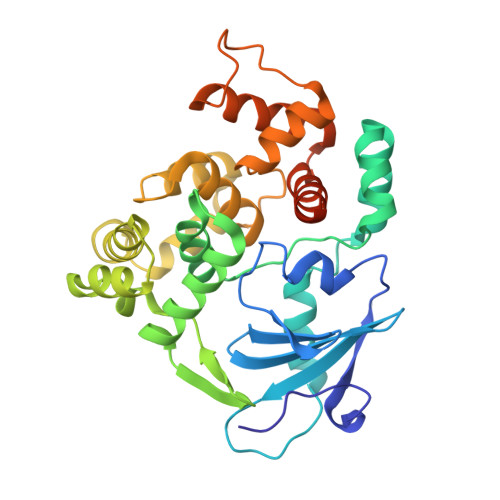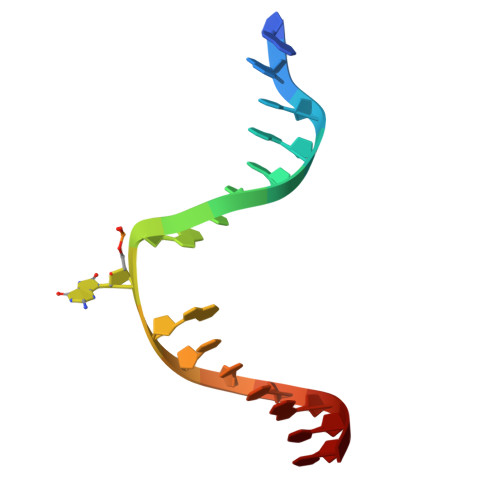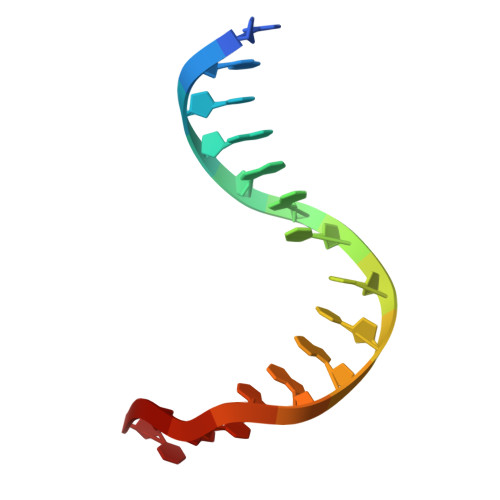Capturing a glycosylase reaction intermediate in DNA repair by freeze-trapping of a pH-responsive hOGG1 mutant.
Unno, M., Morikawa, M., Sychrovsky, V., Koga, M., Minowa, N., Komuro, S., Shimizu, M., Fukuta, M., Tsuyuguchi, F., Mano, H., Ochi, Y., Nakashima, K., Okamoto, Y., Saio, T., Hattori, Y., Tanaka, Y.(2025) Nucleic Acids Res 53
- PubMed: 40754315
- DOI: https://doi.org/10.1093/nar/gkaf718
- Primary Citation of Related Structures:
8XWC, 8XWU, 8XXG, 8XXK - PubMed Abstract:
The human 8-oxoguanine DNA glycosylase 1 (hOGG1) is a bifunctional DNA repair enzyme that possesses both glycosylase and AP-lyase activity. Its AP-lyase reaction mechanism had been revealed by crystallographic capturing of the intermediate adduct. However, no intermediate within the glycosylase reaction was reported to date and the relevant reaction mechanism thus remained unresolved. In this work, we studied the glycosylase reaction of hOGG1 by time-resolved crystallography and spectroscopic/enzymological analyses. To trigger the glycosylase reaction within a crystal, we created a pH-responsive mutant of hOGG1 in which lysine 249 (K249) has been replaced by histidine (H), and designated hOGG1(K249H). Using hOGG1(K249H), a reactive intermediate state of the hOGG1(K249H)-DNA complex was captured in crystal upon pH activation. An unprecedented, ribose-ring-opened hemiaminal structure at the 8-oxoguanine (oxoG) site was found. Based on the structure of the reaction intermediate and QM/MM (quantum mechanics/molecular mechanics) calculations, a glycosylase reaction pathway of hOGG1(K249H) was identified where the aspartic acid 268 (D268) acts as a proton donor to O4' of oxoG. Moreover, enzymologically derived pKa (4.5) of a catalytic residue indicated that the observed pKa can be attributed to the carboxy group of D268. Thus, a reaction mechanism of the glycosylase reaction by hOGG1(K249H) has been proposed.
- Graduate School of Science and Engineering, Ibaraki University, Hitachi, Ibaraki 316-8511, Japan.
Organizational Affiliation:






















